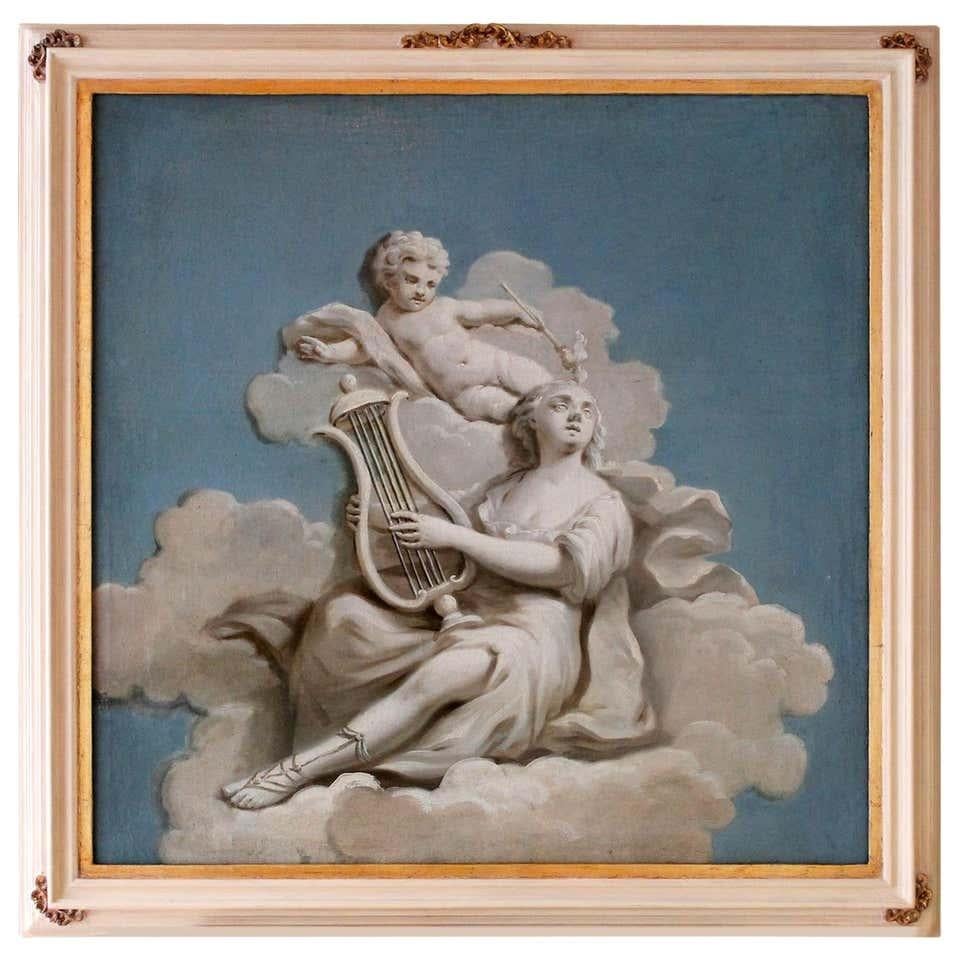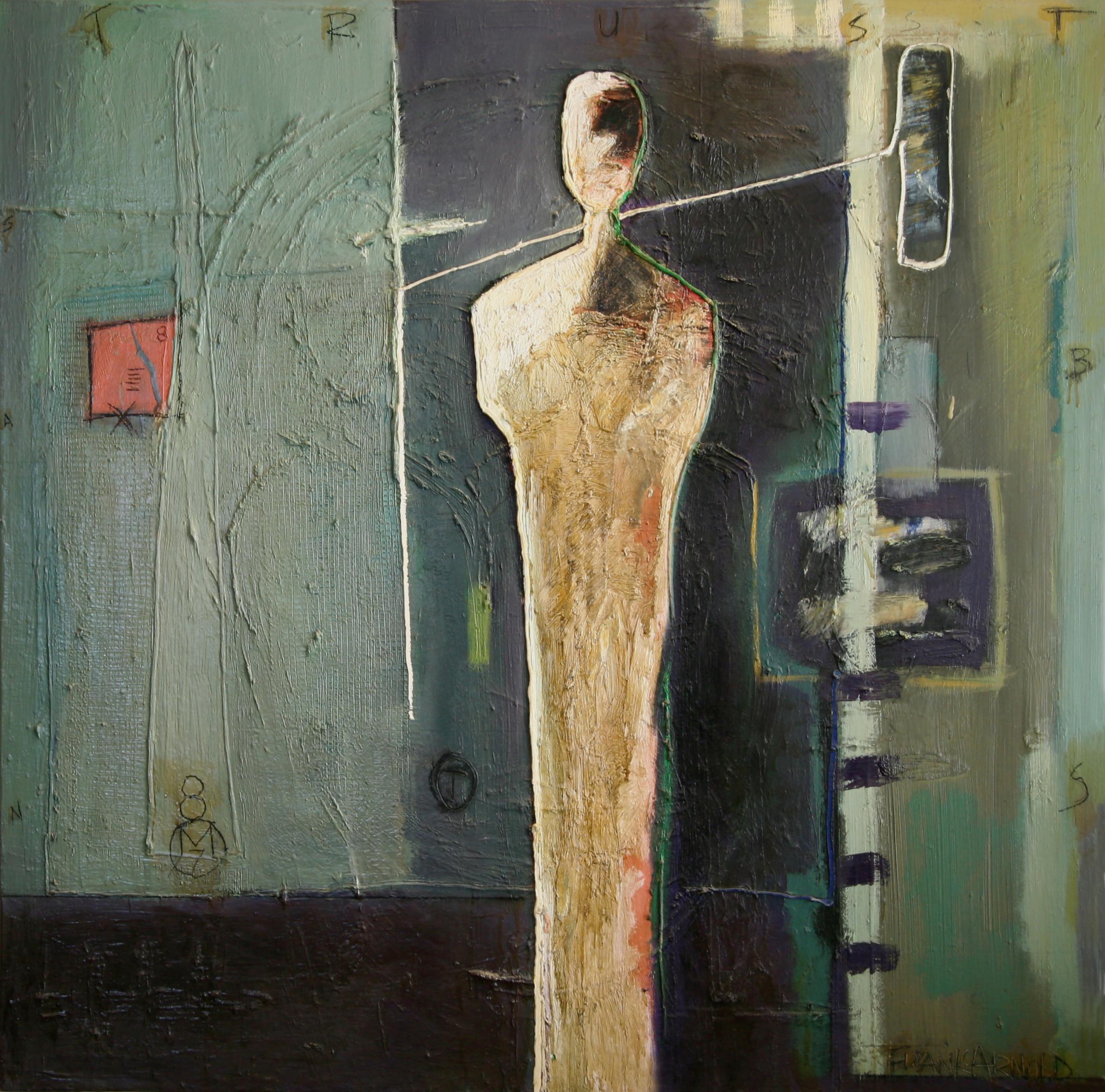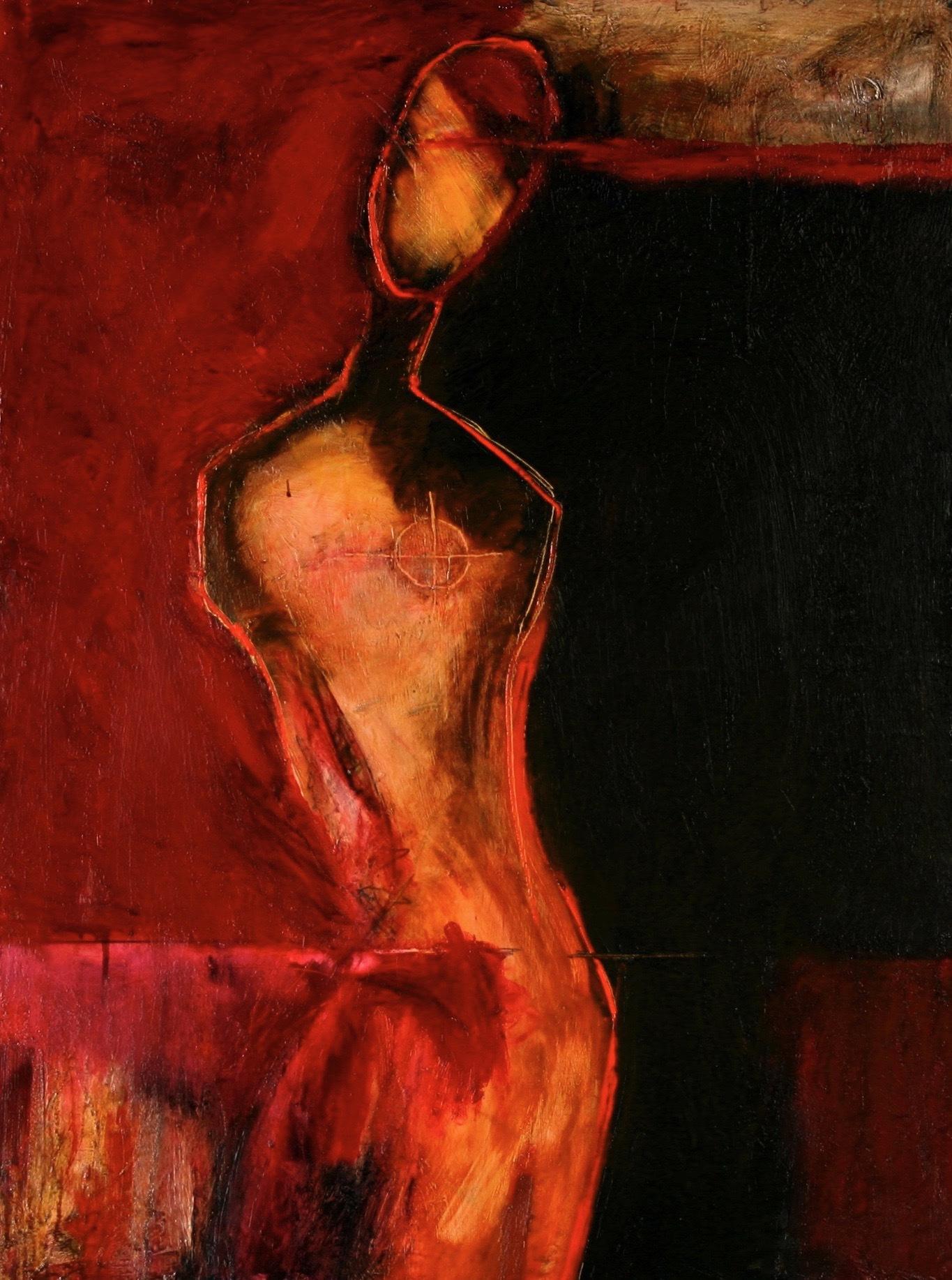Items Similar to Adoration of the Shepherds Oil painting on canvas attributed to Luca Cattapane
Want more images or videos?
Request additional images or videos from the seller
1 of 14
Adoration of the Shepherds Oil painting on canvas attributed to Luca Cattapane
About the Item
Luca Cattapane (Cremona, 1597-1620), attr.
Adoration of the Shepherds
Oil on canvas, 110 x 90 cm - with frame 129 x 101 cm
Ascribed to the Lombard school of the late 16th century, the painting more accurately exhibits Cremonese characteristics: research conducted on artists active in that area suggests attribution to Luca Cattapane.
The silence of historical sources does not allow us to trace a biography of the painter, whose dates of birth and death are unknown, while documented is his apprenticeship with Vincenzo Campi, whose naturalistic research he would continue, freeing himself from the Malossian manner, so much so that in 1929 Roberto Longhi commenting on the Decolation of St. John the Baptist-now in the church of Santa Maria Maddalena in Cremona-described him as a little missed Caravaggio. The canvas under consideration testifies to the luministic direction inferred from the works of Antonio Campi, as can be seen by observing the altarpiece of the same subject in Santa Maria della Croce in Crema, while the style of the expressions and caricatured characters are consequential to those devised by Vincenzo Campi. Knowledge of Luca Cambiaso and his famous nocturnes should not be excluded from Cattapane's training. Further corroborating the attributive motives is a comparison with the Adoration of the Shepherds preserved in the Diocese of Lodi, which has a similar scenic layout and where some figures show interesting formal similarities. In this regard we point out the faces of the shepherds, whose profiles and anatomical structures correspond to those painted in our composition. The image exudes a remarkable expressive and monumental force, supported by the descriptive intent of the faces that stand out from the dark backdrop with Pre-Caravaggesque sensitivity. Also inferred is the old reference to Jacopo Bassano and Veronese portraiture, but here translated with sobriety and naturalistic desire. In this regard, note the offerings laid on the illuminated ground in the foreground: the basket filled with eggs, the lamb, the palm tree, and the cross.
As for the 'night-light' setting, we cannot help but mention the great predecessors such as Lotto (note the Nativity at Night preserved at the Pinacoteca Nazionale in Siena), Savoldo (see the Adoration preserved at the National Gallery of Art in Washington) and the aforementioned Giovanni Battista Trotti (the Malosso), whose great Adoration preserved at the Castello Sforzesco in Milan is proposed. After all, the "night time" setting was the element that fostered the critical fortune of Cattapane, who was considered one of the best painters already by part of ancient Cremonese art literature and thus remembered both in his biographies and in ancient guides to the city. Luigi Lanzi was the first to juxtapose his signature nightlight effects with Caravaggesque research, writing, "In the rest, either in wanting to create his own style, or to conform to Caravaggio, he painted more gloom than the Campi and with better choice. [...]"
Citing the Madonna and Child with Saints Anthony and Paul I preserved in the Cremona Cathedral or the Madonna with Saints Francis and Nicholas exhibited in the Cremona Town Hall, we can instead find that the physiognomy of the face of the St. John Child is similar to that of the children (indifferently the Christ or the St. John Child) in the other three paintings. A preparatory drawing by Luca Cattapane depicting the face of a child has appeared on the English antiques market: the same physiognomy used to render the other children in the paintings, including the one in our canvas, also emerges in this sketch.
- Attributed to:Luca Cattapane (1597 - 1620, Italian)
- Dimensions:Height: 50.79 in (129 cm)Width: 39.77 in (101 cm)
- Medium:
- Period:
- Condition:
- Gallery Location:Milan, IT
- Reference Number:1stDibs: LU2639213033272
About the Seller
No Reviews Yet
Vetted Seller
These experienced sellers undergo a comprehensive evaluation by our team of in-house experts.
1stDibs seller since 2023
- ShippingRetrieving quote...Ships From: Milan, Italy
- Return PolicyA return for this item may be initiated within 14 days of delivery.
More From This SellerView All
- Battle scene Oil painting on canvas Attributed to Karel BreydelBy Karel BreydelLocated in Milan, ITAttr. to Karel Breydel, known as the Knight of Antwerp (1678 - 1733) Battle with knights and landscape in the background Oil on canvas, cm 44.5 X 36.7 Frame 52.5 x 45 cm The pain...Category
Late 18th Century Figurative Paintings
MaterialsCanvas, Paint, Oil
- Still life with fruits on a shelf Oil painting on canvas Paolo PaolettiLocated in Milan, ITPaolo Paoletti (Padua, 1671 - Udine, 1735) Still life with fruits on a shelf Oil on canvas, 53.5 x 81 cm Expert opinion Dr. Gianluca Bocchi The still life under consideration can...Category
18th Century Figurative Paintings
MaterialsCanvas, Paint, Oil
- Presentation of Mary in the Temple Oil on canvas Scope of Pietro BardellinoBy Pietro BardellinoLocated in Milan, ITScope of Pietro Bardellino (1728-1806), circa 1760s Presentation of Mary in the Temple Oil on canvas, 163 x 150 cm With frame, cm 166 x 152 Dealt with in the proto-gospel of James, an apocryphal gospel, Mary's presentation to the temple remains to this day one of the most moving Marian artistic episodes. The moment figured here, in which the little Virgin is encouraged to the high priest by her nobly determined mother Anna, encapsulates a composition harmoniously cradled between Baroque and Classicism. All present turned in amazement to observe the young woman's unexpected entry into the sacred premises, while a direct light detached her figure from the soft incensed air. This strong expressive naturalness, added to the clear formal concreteness used by the artist, intoxicates the painting with the academicism already belonging to Francesco Solimena and Giacomo del Po, on a par with the greatest Neapolitan masters. The thoughtful consistency with which the artist organizes the luminous and tangible colors also formalizes his dependence on Pietro Bardellino, a distinguished exponent of the first Rococo investigations on Neapolitan soil. Committed from his youth to the great hall of the Farmacia degli Incurabili, Bardellino turned to the Oratory of the Confraternity of the Whites of the Holy Spirit, working at the same time for Bitonto Cathedral. Appointed a member of the Academy of Fine Arts, he was recalled there as an active collaborator by Vanvitelli himself, in 1773. A debtor in turn to the style of Francesco de Mura, his master, by the mid-18th century Bardellino was already registered as a fresco painter at the main royal residences of Ferdinand IV of Bourbon, reaching the pinnacle of his success there in 1781 with the commission to fresco The Virtues Crowning Ferdinand IV and Maria Carolina on the huge ceiling of the Grand Hall of the Palazzo dei Regi Studi in Naples (later to become the Royal Bourbon Museum used in our days as the National Archaeological Museum of Naples). This evidence allowed him to become a master in the technique of fresco painting, boasted therefore at several noble residences, among the interiors of which it is possible to recall those of Cellamare, Ischitella and Spinelli di Fuscaldo. A coloristic lucidity, similar to that which shines in the present, returns in Bardellino's late works, now exhibited in the old apartment of the Reggia di Caserta (Science and the Arts, Peace and War, Innocence, Simplicity, Truth, Day and Night), albeit colder, due to the artist's adoption of the northern European art trends fashionable at the court of the Bourbon consort Maria Carolina, also influencing Corrado Giaquinto...Category
18th Century and Earlier Figurative Paintings
MaterialsCanvas, Paint, Oil
- Jacob's departure for the land of Canaan Canvas from the Grechetto WorkshopLocated in Milan, ITWorkshop of Gio Benedetto Castiglione called the Grechetto (Genoa, March 23, 1609 - Mantua, May 5, 1664) Jacob's departure for the land of Canaan Oil on canvas, 80 x 115 cm - Fra...Category
17th Century Figurative Paintings
MaterialsOil, Canvas
- Game of bowls Oil painting on canvas by Domenico OliveroLocated in Milan, ITDomenico Olivero (Turin, August 1, 1679 - January 13, 1755) Game of bowls Oil on canvas, 43 x 65 cm With frame, 54.5 x 76 Expert opinion Prof. Alberto Crispo The painting shown here depicts peasants playing bowls near a farmhouse, while one of them offers sweets to a little girl. The canvas, in my opinion, can be traced back to the hand of Pietro Domenico Olivero (Turin, August 1, 1679 - January 13, 1755), as revealed by comparisons with other works by the artist, such as the Peasants' Feast already at the Gilberto Zabert Gallery in Turin, where we find an entirely similar layout, with the figures crowded around the building, placed on the left, and some household goods piled up on the right, including a copper cauldron almost identical to the one sketched in our painting. But see also other similar subjects painted by the Turin-based artist, such as the Game of Bowls already at the Cantore Gallery in Modena or the other version on the Genoese market in 2019, which, although radically different compositionally, confirm the painter's interest in playful themes and manifest the same ways in delineating characters, with synthetic and robust brushstrokes. The artist was born in Turin, in the parish of St. Thomas, on August 1, 1679 to Giovanna and Francesco, a carver by profession. He trained at the workshop of the painter and architect Melchiorre Baldassarre Bianco. He was esteemed by Victor Amadeus II of Savoy, who commissioned paintings for the Venaria Reale (1714), the Royal Palace of Turin (1716), and Rivoli Castle (1724), as well as by his ministers Pietro Mellarède and Carlo Vincenzo Ferrero di Roasio marquis of Ormea whose collections counted many of the painter's works. His success on the Turin art scene earned him election as prior of the Accademia di San Luca in Turin (1726). In 1731 he painted the eleven canvases with Stories of Franciscan Saints in the sacristy of the church of St. Thomas in Turin, while in 1734 he made the Marriage at Cana for the sanctuary of Oropa. The Savoy commissions continued with the ten canvases executed for the castle of Agliè (1737), the decoration of the third room of the New Archives in the Royal Palace of Turin (1739-41), and the thirty or so works for the hunting lodge at Stupinigi (1748-51). The painter also measured himself in designing sets for the Teatro Regio in Turin (1745-46). He made his will on November 15, 1754, and died in his hometown on January 13, 1755. Olivero's genre scenes, such as the one commented on here, reveal a focus on Flemish painting, particularly by David Teniers the Younger, Peter Mauritz Bolckman, Theodor Helmbreker, and Cornelis de Wael, as well as Roman bamboozlers such as Pieter van Laer, Michelangelo Cerquozzi, and Jan Miel...Category
18th Century Figurative Paintings
MaterialsCanvas, Paint, Oil
- Pompeian scene with spinner Painted François-Barthélemy-Marius AbelLocated in Milan, ITFrançois-Barthélemy-Marius Abel (Marseille, 1832 - Paris, 1870) Scene with spinner Oil on canvas, 91 x 71 cm Framed, 120 x 100 cm Signed and dated "F. Barthelemy 1876" A young ...Category
19th Century Figurative Paintings
MaterialsCanvas, Paint, Oil
You May Also Like
- French 19th Century Oil on Canvas Blue and White Music Allegory Cherub PaintingLocated in Firenze, ITThis romantic French 19th century allegoric oil painting on square canvas has a sky blue background, a fluffy cloud fills the central part of the painting where a woman is lying down playing the lyre, while a graceful cherub seems to twirl over her. This oil on canvas painting represents the allegory of music - with a woman dressed in classical clothes and a putto- a very popular theme during all the neoclassical age, with its lively scene inspired by the Rococo period. The composition creates a awesome trompe-l'œil effect thanks to the color palette scheme. Well painted white and gray shadings (chiaro scuro) that stands out from the light blue background in typical grisaille style. This painting originally was an over door frieze...Category
19th Century Rococo Figurative Paintings
MaterialsCanvas, Oil
- Italian 18th Century Oval Religious Oil on Canvas Painting with Saint DominicBy Francesco de MuraLocated in Firenze, ITThis beautiful Italian 18th Century old masters oil painting on oval canvas with giltwood frame is attributed to Solimena and features a religious scene. In this splendid oval-shaped painting are depicted Saint Dominic...Category
18th Century Old Masters Figurative Paintings
MaterialsOil, Canvas
- Italian Oil on Canvas Painting Coat of Arms in Gold Leaves Panel and Black FrameLocated in Firenze, ITThis huge Italian 19th century armorial painting features the coat of arms of Montini, a noble Italian family that has among its ancestors the Archbishop of Milan, later known as Pope Paul VI. The large oval canvas has a brown and red background, the latter shaped like a shield, in which six mountains (from the etymology of the surname) and three white fleur de lis are painted. This big scale palatial oil painting...Category
Late 19th Century Italian School Figurative Paintings
MaterialsOil, Canvas, Wood
- Oil on Canvas “BS Trust”By Frank ArnoldLocated in Fresno, CA“BS Trust” is 36” x 36”. Frank Arnold’s paintings exhibit the highest quality materials for a truly archival piece, created to last generations. Much of Frank Arnold’s work is sourc...Category
2010s Abstract Abstract Paintings
MaterialsCanvas, Oil
- Last DanceBy Frank ArnoldLocated in Fresno, CALast Dance is an Oil on Canvas painting in soft, light aqua tones with red/brown accents. Frank Arnold is thought by many to be one of the foremost abstract...Category
2010s Abstract Abstract Paintings
MaterialsCanvas, Oil
- My Other SideBy Frank ArnoldLocated in Fresno, CA“My Other Side” is 48”x 36”. This is an earlier piece by Arnold from the estate of a late collector of his work. This piece is predominantly shades of red from light to almost black....Category
Early 2000s Abstract Abstract Paintings
MaterialsCanvas, Oil




